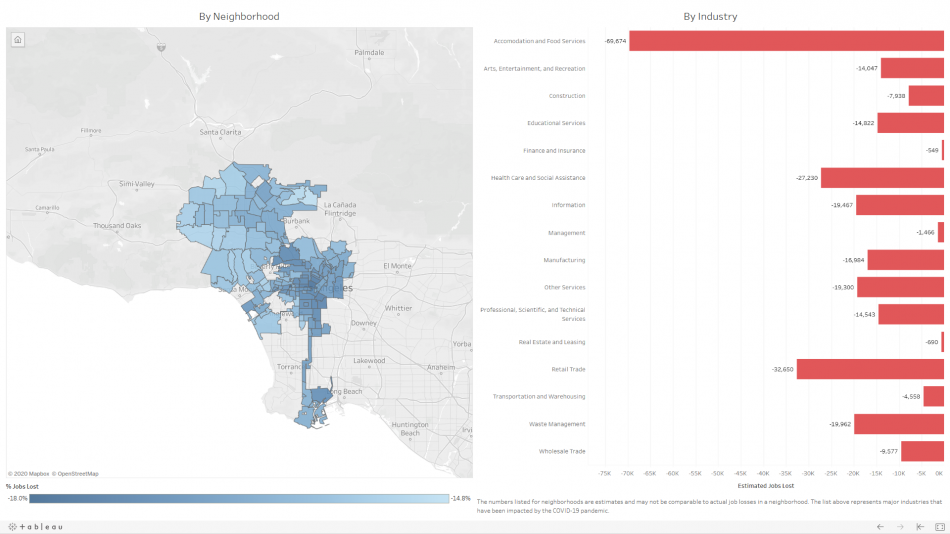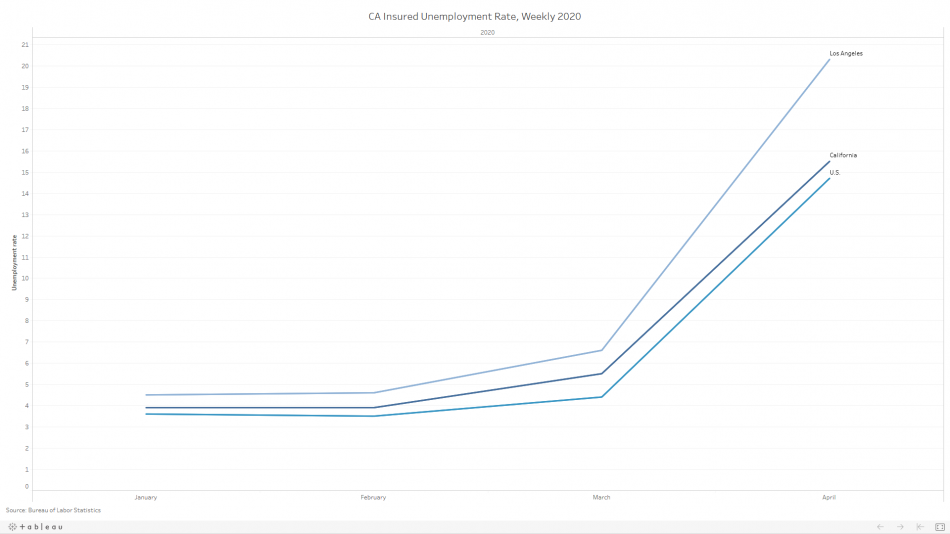A new mapping tool produced by the Los Angeles City Controller's Office illustrates how job losses have devastated the Los Angeles area since the start of the COVID-19 pandemic.
More than 4.7 million California residents have filed unemployment claims since March 2020, when the impacts of the new coronavirus started to be felt widely. That figure includes more than 400,000 Los Angeles residents, representing a 300 percent increase over the number of employment claims filed in the preceding month.
In total, Los Angeles County has lost an estimated 685,000 job during April and May - the largest employment downtown in recent history, according to Galperin. The City of Los Angeles accounted for more than 300,000 of those job losses, more than doubling the Countywide job losses from January 2009, when the Great Recession was at its height.
According to Galperin, the City's job losses are felt most acutely in Central, South, and Northeast Los Angeles - communities with high concentrations of African-American and Latino families, as well as immigrants, low-income residents, and single-parent households.
The City Controller's data shows that the industries which suffered the steepest job losses are:
- Accommodation and food service: down 70,000 jobs
- Retail trade: down 33,000 jobs
- Healthcare: down 27,000 jobs
- Information: down 19,000 jobs
North Hollywood, where more than 17,000 residents lost jobs, is the neighborhood which experienced the most severe impacts from COVID-19. Mid-City, Pico-Union, Westlake, Harvard Heights, and Historic South-Central experienced the highest percentage of job losses among residents.
“America lost a staggering 20.5 million jobs in April, including hundreds of thousands in the City of Los Angeles — something we haven’t seen since the Great Depression,” said Galperin in a news release. “The pandemic has amplified the devastation felt by low-income neighborhoods and communities of color, highlighting just how much economic injustice truly exists in our City. It is my hope that understanding which neighborhoods are most impacted will help City leaders pinpoint areas of L.A. that need additional resources to recover from the fallout of COVID-19. We have to be a City that not only speaks of equality, but acts to promote it.”








